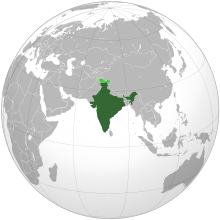Maoist Encounter: Fall Of The Legend Kishenji – Analysis
By IPCS
By Rajat Kumar Kujur
The evening of 24 November 2011 suddenly started bustling as the media flashed news of the death of Malojula Koteshwara Rao, more prominently known as Kishenji. The number two man of the CPI (Maoist) organizational structure was killed in a joint operation by 207 Combat Battalion for Resolute Action (COBRA), 184 Central Reserve Police Force (CRPF) battalion and West Bengal state police at Burishol village in Junglemahal area of West Bengal. Undoubtedly this is the greatest blow that the CPI (Maoist) has suffered in recent times.
His death will be crucial marker as he was a Maoist ideologue par excellence with the skills of a military general. As a guerilla leader his tactics and skills draw comparisons with that of the phenomenal Ho Chi Minh. Not only was he heading Maoist operations in Eastern India but he was also the member of the Central Committee, Central Military Commission and the Polit Bureau of the CPI Maoist.

Born in the Peddapalli town of Karimnagar district of Andhra Pradesh Koteshwara Rao was one of the senior most Maoist leaders who belonged to the first generation of Peoples War group. In recent times, particularly with the onset of the Lalgarh Movement, Kishenji made a tactical Maoist shift from being media shy to becoming media savvy. This made him the face of contemporary Maoist movement in India. His public image remains that of a face-covered man showing only his back with a striped scarf around his head and an AK-47 Assault Rifle slung across his shoulder. In 1980s he became the secretary of the People’s War Group in Andhra Pradesh and then shifted to Dandakaranya in 1985.
In the early 1990s he was made incharge of Bihar, then a stronghold of MCCI. He played a crucial role in the unification of MCCI and PWG resulting with the birth of CPI (Maoist). After the formation of CPI (Maoist), Kishenji moved into the tribal belt of West Bengal, where he successfully built an underground guerilla network and a structure for the Maoist operations in the whole of Eastern India. The Lalgarh movement engineered by Kishenji is being seen as his biggest achievement.
With a contingent of 20000 armed cadres of CPI (Maoist) under his command Kishenji was the symbol of Maoist terror. As a Maoist ideologue he aimed to overthrow the Indian Parliamentary Democracy via the method of protracted armed struggle in sync with Mao’s prescription. Kishenji advocated the nationalization of Indian business within and adjacent to Maoist territories and the redistribution of wealth of India’s most powerful men such as Ratan Tata and Anil Ambani.
He saw the use of violence or “counter-violence” by the Maoists as a means of protracted armed struggle to attain political power in a landscape of contiguous districts throughout India’s impoverished central Deccan Plateau and along the steamy coast of the Bay of Bengal. On the military front the insurgents under Kishenji’s command proved mastery over traditional Maoist tactics of hit-and-run attacks and ambushes on Indian security forces. In the last several years they also showcased their ability at using improvised explosive devices to inflict mass casualties on their opponents. Regular kidnappings and beheadings of police officers had become the hallmark of Kishenji’s movement.
With some rights group crying foul in the encounter of Koteshwara Rao, there are others who believe that internal schisms within the Maoist leadership could also be a cause. Also there are reports that a laptop confiscated recently from the top Odisha Maoist leader Sabyasachi Panda’s hideout significantly helped the security forces carry out the anti-Maoist operation against Kishenji.
Speculations apart, Koteshwara Rao’s death will certainly prove to be a big blow for the Maoist movement in India. The vacuum created by his death is greater than that of Azad because Azad was a top Maoist ideologue but Kishenji belonged to the rare breed of Indian Maoists who can be both a top Maoist ideologue and a military general on the field. Incidentally his brother Mallojula Venugopal is now the official spokesperson of CPI (Maoist), a post once held by Azad.
On the other hand the government is not in a position to celebrate the annihilation of Kishenji. For he was no one man but he was the symbol Maoist strength. The way Maoists operate it is certain that they will try to avenge the death of Kishenji. Threats loom large, not only for West Bengal but for whole of Eastern India. The government needs to tread cautiously, since it faces a daunting task in carrying forward its ongoing military offensives and development overtures which will now be opposed by Maoists with even more vigour. At the moment the real challenge for the government lies in consolidating its position, capitalizing on the dilemma of the Maoists who are currently ill-poised to move forward.
Rajat Kumar Kujur
Sambalpur University
email: [email protected]
